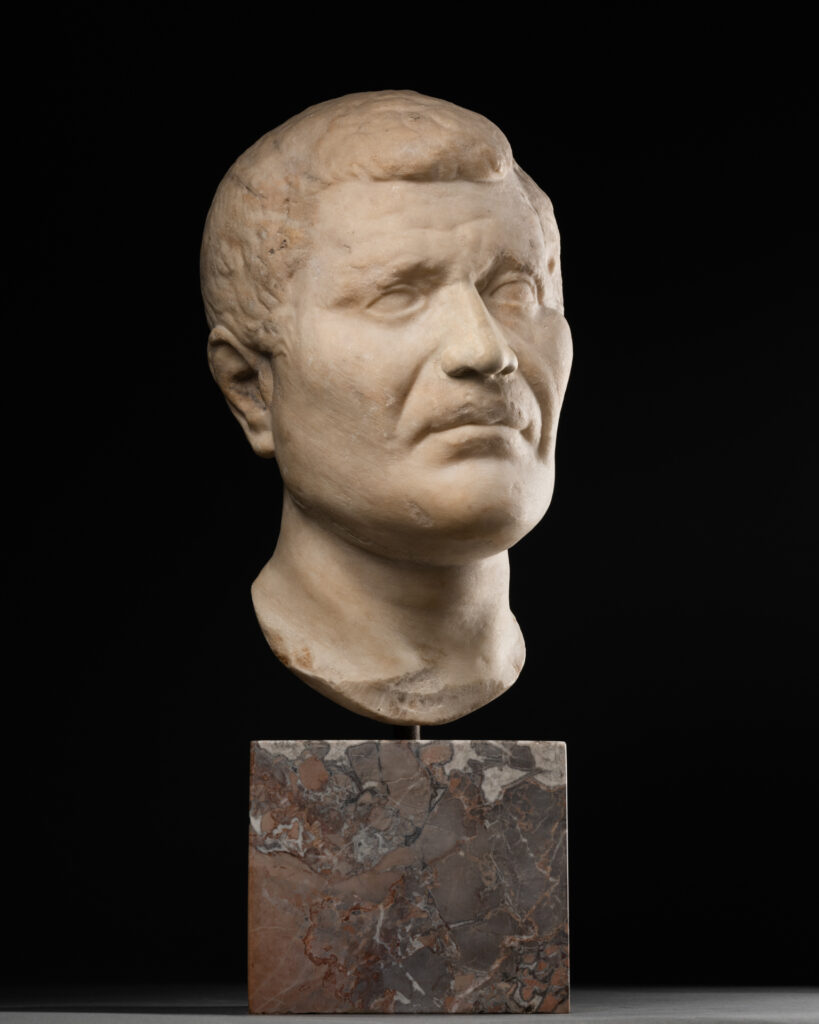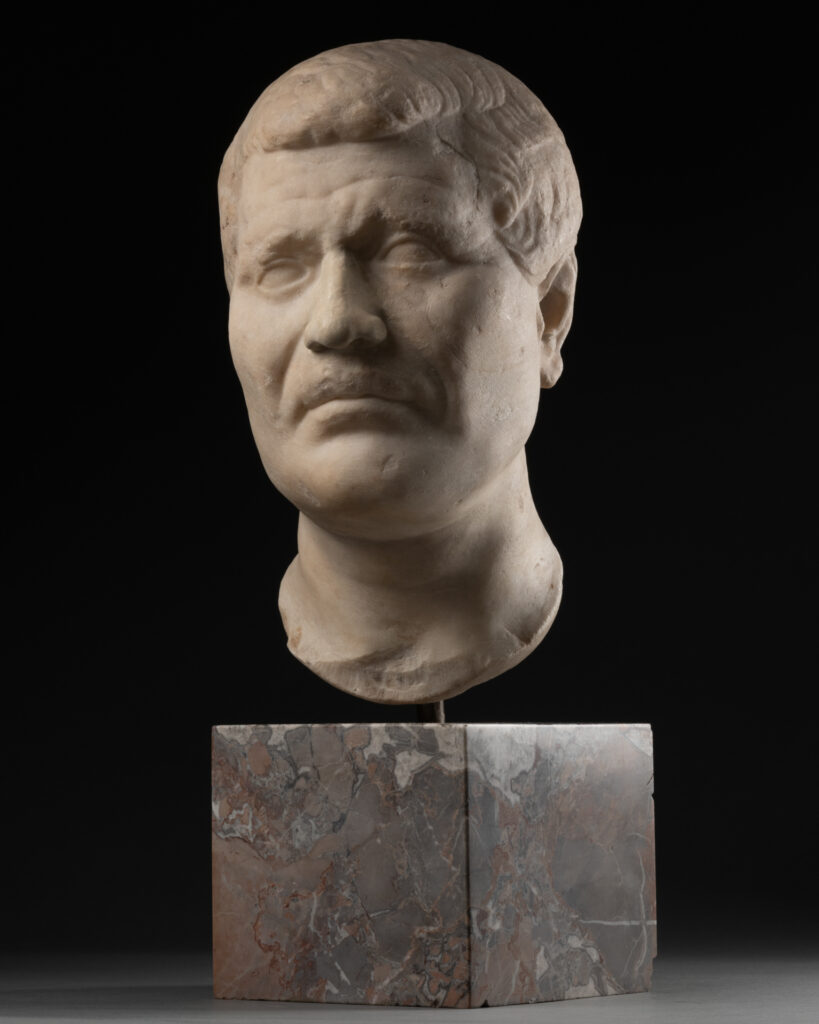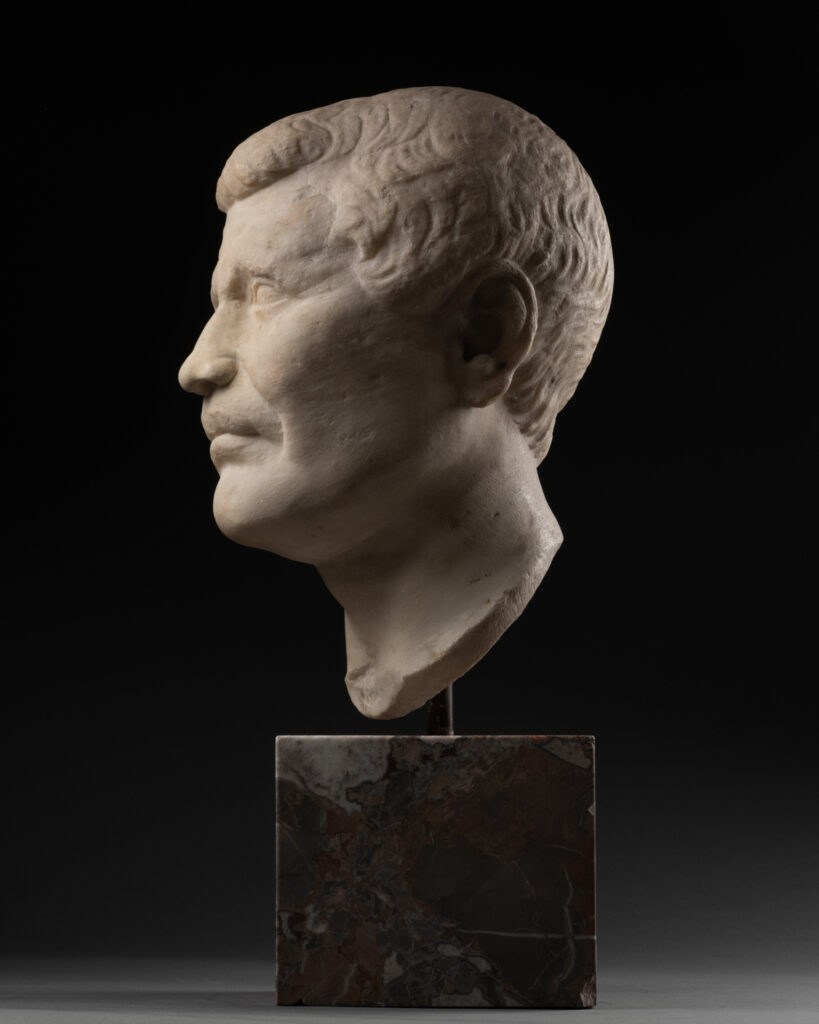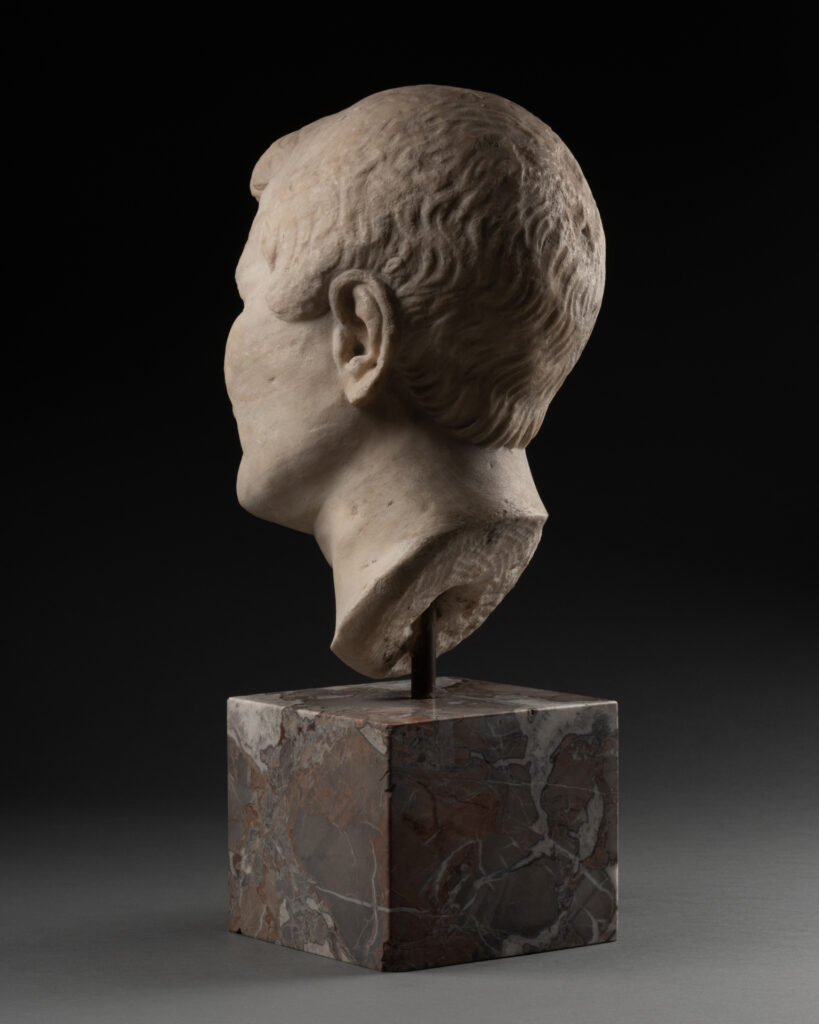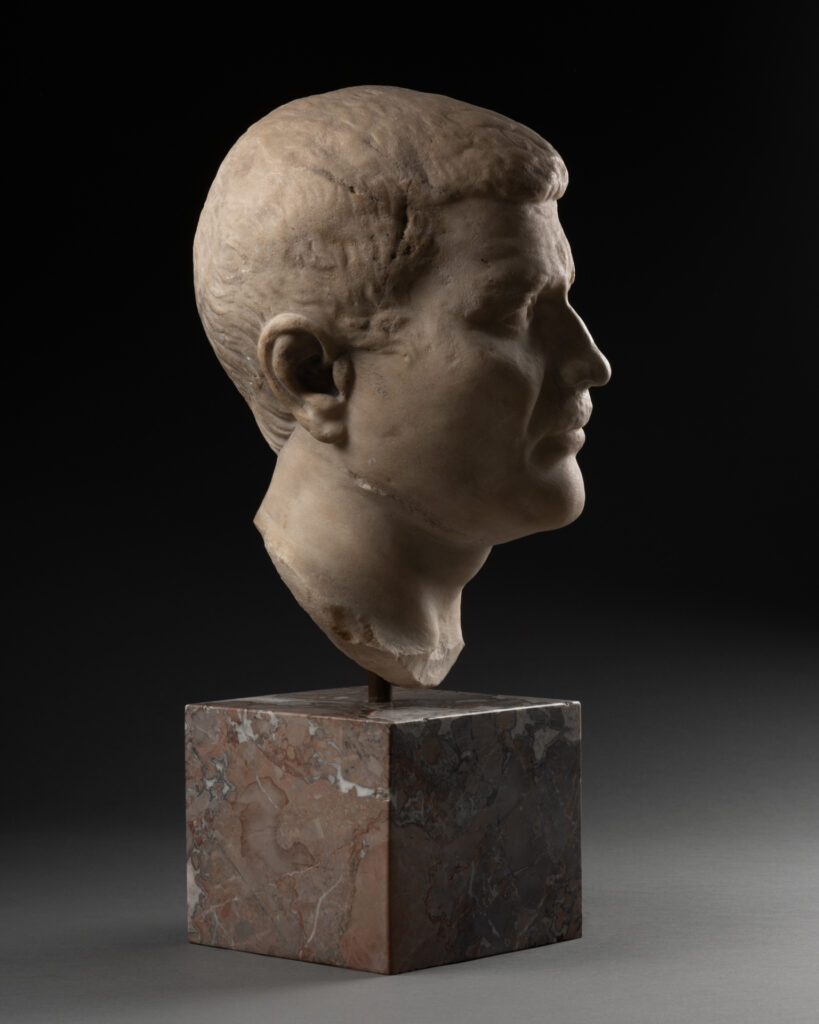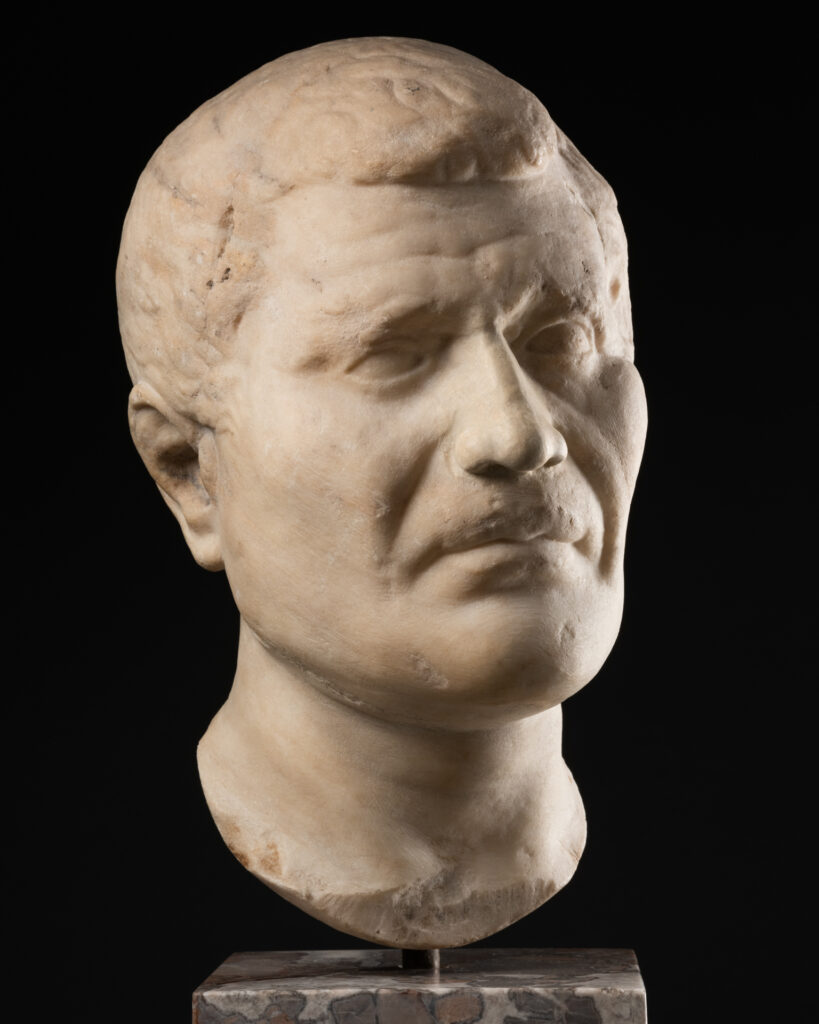The facial features are marked: hollow cheeks, high cheekbones and a square jaw. The chin is wide and prominent, the mouth is closed and the lips are full and curved, creating a slight shadow. The eyes, in the shape of almond, are small and slightly turned in. The hair is thick on the front and bald on the temples. The whole hair is in thick ends and with a slight wave.
The mature, virile allure of this figure, combined with the double chin, recalls representations of Marcus Vipsanius Agrippa.
Agrippa (? 63 BC – 12 BC) was a Roman general, politician and close associate of Octavian (later Emperor Augustus): a loyal friend, man of war, builder, son-in-law and heir apparent to the Empire, Agrippa was involved in every battle during Augustus’ reign.
Present at Octavian’s side from the death of Caesar in 44 BC, Agrippa participated in the establishment of the principate and in the civil wars at the end of the Roman Republic. He was a major figure in the new conquests of the Empire, notably in Hispania and on the Danube. He distinguished himself many times in battle, and he commanded the fleet at the battle of Actium in 31 BC against Antony and Cleopatra.
He married the daughter of Augustus, Julia, with whom he had five children, two of whom were adopted by the Emperor and made heirs. By the multiple matrimonial strategies of Augustus, Agrippa is thus the maternal grandfather of emperor Caligula, the maternal great-grandfather of Nero, the father-in-law of Germanicus (heir to the Empire), and grandfather of Agrippina the younger (wife of emperor Claudius).
As a builder, he built thermal baths on the Campus Martius which were bequeathed to the Roman people at his death (thus becoming the first public thermal baths in the city), numerous temples, aqueducts, porticoes and theaters as well as numerous roads in Rome and the provinces, notably in Gaul where he was governor. He was also responsible for the first pantheon in Rome, which was begun in 27 BC. Very close to Augustus, he constantly granted him powers, honors and responsibilities, making Agrippa almost a second emperor.
At the death of Marcellus, nephew of Augustus and principal heir, Agrippa became in his turn heir apparent of the Empire. After a last conquest in the Danube region, he died in 12 BC in Campania. To honor his friend, Augustus organized a sumptuous funeral for him, similar to those he planned for himself, and he mourned for more than a month. He also adopted Agrippa’s children and took charge of their education. Although having prepared his burial, Agrippa will have the honor to see his remains rest in the mausoleum of Augustus, as well as the members of the imperial family.
Despised by the Roman aristocracy for his modest origins, but adulated by the plebs for his career and his qualities, Agrippa is recognized by ancient and contemporary historians as a great man, an excellent military man, a builder, founder of the Roman Empire and almost the equal of Augustus.
